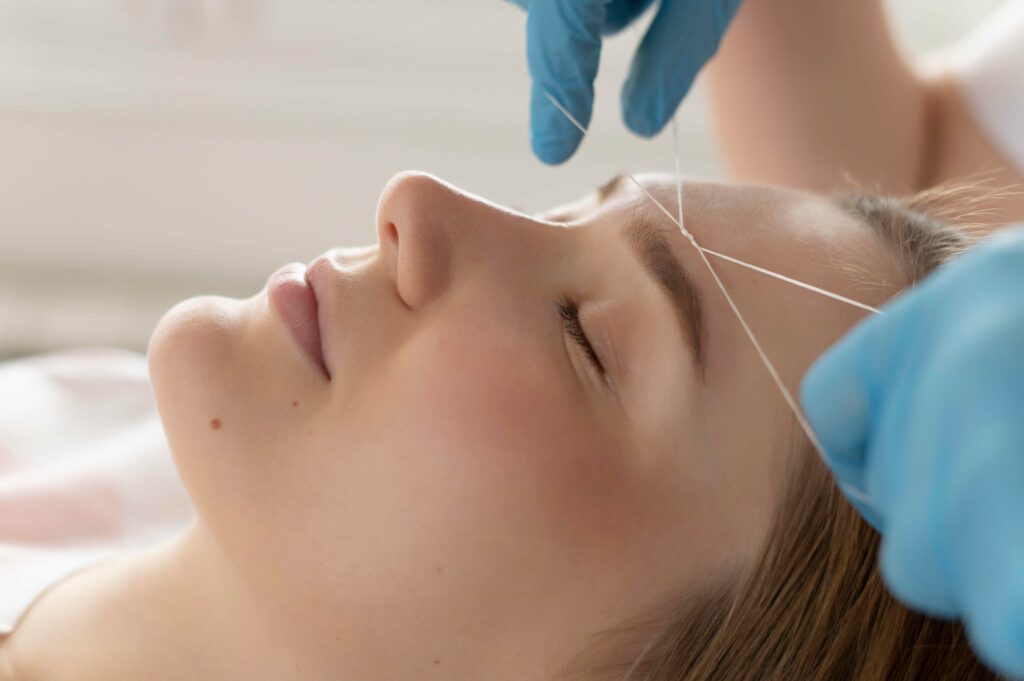
- February 13, 2024
- Comments: 0
- Posted by: Support Team
Threading is a popular method of hair removal that has been practiced for centuries. It involves using a twisted cotton thread to remove unwanted hair from the root, resulting in a clean and precise finish. While threading is generally considered safe and effective, there is a growing concern about its potential link to acne. This article aims to explore the relationship between threading and acne, shedding light on the causes, effects, and prevention of acne after threading.
Key Takeaways
- Threading is a hair removal technique that involves twisting and pulling hair out of the skin.
- Acne is caused by a combination of factors, including excess oil production, clogged pores, and bacteria.
- Threading can irritate the skin and potentially spread bacteria, leading to acne breakouts.
- Proper aftercare, including cleansing and moisturizing the skin, can help prevent acne after threading.
- Alternatives to threading, such as natural hair removal methods, may be better suited for those with acne-prone skin.
What is threading and how does it work?
Threading, an ancient hair removal technique with roots tracing back to the Middle East and South Asia, has gained widespread popularity for its precision and effectiveness. This method utilizes a simple yet ingenious tool—a looped cotton thread—which is expertly twisted and rolled over the skin, capturing and extracting unwanted hair directly from the follicle.
The process involves skillfully maneuvering the thread, creating a mini-lasso effect that swiftly and efficiently plucks out multiple hairs in one smooth motion. This meticulous approach makes threading particularly well-suited for shaping eyebrows, as it allows for precise control and definition, resulting in beautifully sculpted arches and clean lines.
Beyond eyebrow shaping, threading offers versatility in hair removal, extending its utility to various facial areas such as the upper lip, chin, and cheeks. Its gentle yet thorough removal method minimizes skin irritation and ensures a smooth, hair-free finish.
Unlike some hair removal techniques that may involve chemicals or harsh pulling, threading is relatively gentle on the skin, making it suitable for individuals with sensitive skin or those prone to irritation. Additionally, threading does not involve the use of any harmful chemicals, making it a more environmentally friendly and sustainable option compared to certain alternatives.
One of the significant advantages of threading is its ability to target even the finest and shortest hairs, ensuring a thorough removal that leaves the skin smooth and flawless. This precision is especially beneficial for those seeking long-lasting results, as threading effectively reduces the likelihood of quick regrowth.
Moreover, threading offers the added benefit of exfoliation as it gently removes dead skin cells along with unwanted hair, leaving the skin looking refreshed and rejuvenated. This dual action contributes to a smoother complexion and can help improve the effectiveness of skincare products applied subsequently.
In addition to its effectiveness and precision, threading is favored for its relatively quick procedure time, making it a convenient option for individuals with busy schedules. With minimal discomfort and virtually no downtime, threading provides a hassle-free solution for maintaining smooth, well-groomed skin.
Overall, threading stands as a time-honored hair removal technique that continues to captivate individuals seeking a natural, precise, and efficient method for hair removal. Its ability to deliver exceptional results with minimal irritation and downtime has cemented its status as a go-to choice for achieving beautifully sculpted eyebrows and smooth, hair-free skin.
Understanding The Causes Of Acne
Acne, a widespread skin concern, manifests when hair follicles become obstructed with a combination of sebum (oil) and dead skin cells. This accumulation creates an ideal environment for the proliferation of bacteria, resulting in inflammation, redness, and the formation of various types of blemishes, from blackheads and whiteheads to more severe forms like cysts and nodules.
Understanding the multifaceted causes of acne is crucial for effective management and treatment. One prominent factor contributing to acne development is hormonal fluctuations. During puberty, hormonal surges stimulate the sebaceous glands to produce excess oil, which can overwhelm the follicles and lead to blockages. Similarly, hormonal changes during menstruation, pregnancy, or conditions like polycystic ovary syndrome (PCOS) can exacerbate acne symptoms due to increased oil production.
Moreover, genetics play a significant role in acne susceptibility. Individuals with a family history of acne are more likely to experience persistent breakouts, indicating a hereditary predisposition to the condition. Additionally, lifestyle factors such as diet and stress can influence acne severity. Diets high in refined carbohydrates and sugars may contribute to increased oil production and inflammation, exacerbating acne symptoms. Likewise, stress triggers the release of certain hormones like cortisol, which can stimulate oil production and worsen existing breakouts.
Environmental factors also play a role in acne development. Exposure to pollutants and airborne particles can accumulate on the skin’s surface, leading to pore blockages and contributing to acne formation. Similarly, using comedogenic skincare products or heavy cosmetics can exacerbate acne by further clogging pores and trapping bacteria.
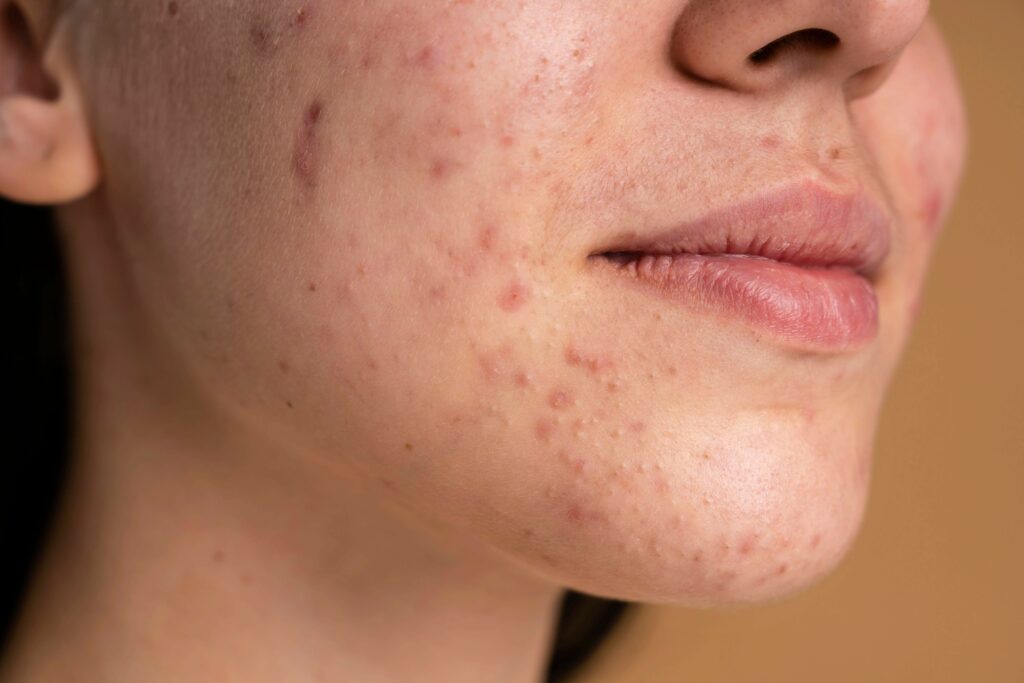 Furthermore, certain medications and underlying health conditions can contribute to acne flare-ups. Medications containing corticosteroids, lithium, or androgens may trigger or worsen acne symptoms as a side effect. Additionally, conditions like polycystic ovary syndrome (PCOS) and hormonal imbalances can disrupt the body’s natural regulatory mechanisms, leading to increased oil production and acne breakouts.
Furthermore, certain medications and underlying health conditions can contribute to acne flare-ups. Medications containing corticosteroids, lithium, or androgens may trigger or worsen acne symptoms as a side effect. Additionally, conditions like polycystic ovary syndrome (PCOS) and hormonal imbalances can disrupt the body’s natural regulatory mechanisms, leading to increased oil production and acne breakouts.
Understanding the complex interplay of these factors is essential for developing personalized acne treatment plans. While topical treatments like benzoyl peroxide, salicylic acid, and retinoids target existing blemishes and prevent new ones from forming, addressing underlying hormonal imbalances may require oral medications or hormonal therapy. Additionally, adopting a holistic approach that addresses lifestyle factors such as diet, stress management, and skincare habits can complement medical interventions and promote clearer, healthier skin in the long term.
The Link Between Threading And Acne
| Thread Count | Acne Severity |
|---|---|
| Low | Mild |
| Medium | Moderate |
| High | Severe |
While threading itself does not directly cause acne, it can contribute to its development in some individuals. The process of threading involves pulling the hair out from the root, which can cause trauma to the hair follicles. This trauma can lead to inflammation and irritation of the skin, making it more susceptible to acne breakouts. Furthermore, individuals with sensitive skin or a predisposition to acne may be more prone to developing breakouts after threading.
Can Threading Cause Acne?
Threading, as a method of hair removal, generally does not directly cause acne. However, there are certain circumstances in which threading might contribute to acne breakouts, albeit indirectly.
One potential concern is the risk of skin irritation or inflammation following threading. The process involves pulling hair out from the follicle, which can sometimes irritate the skin, particularly if it’s sensitive. Irritated skin may become more prone to developing acne breakouts, especially if the skin’s barrier is compromised.
Additionally, if proper hygiene practices are not followed during threading, there is a possibility of introducing bacteria to the skin, which could potentially lead to acne. This risk is higher if the threading technician’s hands or tools are not adequately sanitized.
Moreover, threading can sometimes exacerbate existing acne lesions, particularly if they are inflamed or if there are open wounds on the skin. The friction and pulling involved in threading may irritate acne-prone skin, leading to increased redness, swelling, and potential worsening of acne symptoms.
However, it’s essential to note that for most individuals, threading is a safe and effective method of hair removal that typically does not cause acne. By ensuring proper hygiene, choosing a skilled and experienced threading technician, and following post-threading skincare recommendations, the risk of acne breakouts can be minimized. If someone experiences persistent acne breakouts after threading, it may be beneficial to consult with a dermatologist to determine the underlying cause and explore alternative hair removal options.
The Role Of Bacteria in Acne formation
In addition to the factors mentioned, the role of bacteria, particularly Propionibacterium acnes (P. acnes), in acne formation cannot be overstated. These bacteria are part of the normal skin microbiome and typically exist harmlessly on the skin’s surface. However, when conditions become favorable for their proliferation, such as in clogged pores, they can exacerbate acne symptoms.
P. acnes thrives in the oily environment created by excess sebum production. As it feeds on sebum, it produces byproducts and inflammatory substances that contribute to the formation of acne lesions. These substances can trigger an immune response, leading to redness, swelling, and the characteristic pus-filled bumps associated with acne.
When threading is performed on acne-prone skin, there is a risk of inadvertently spreading bacteria from one area to another. The thread, as it moves across the skin, may pick up bacteria from existing acne lesions and transfer them to unaffected areas. This can potentially worsen existing acne or trigger new breakouts in previously clear areas of the skin.
Moreover, the friction and manipulation involved in threading can disrupt the skin’s protective barrier, making it more susceptible to bacterial invasion and inflammation. This is particularly concerning for individuals with compromised skin barrier function, as it can further exacerbate acne symptoms and delay healing.
To mitigate the risk of bacterial spread during threading, it’s crucial to ensure proper hygiene practices. Threading technicians should sanitize their hands and tools before and after each procedure to minimize the risk of bacterial contamination. Additionally, individuals with acne-prone skin should follow a diligent skincare routine, including cleansing the skin thoroughly before and after threading to remove excess oil, bacteria, and debris.
Overall, while bacteria play a significant role in acne formation, proper hygiene practices and skincare habits can help minimize the risk of bacterial spread during threading and reduce the likelihood of acne breakouts. If someone experiences persistent or severe acne despite these precautions, consulting with a dermatologist for personalized treatment and management strategies is recommended.
Can Threading Spread Bacteria And Cause Acne?
Yes, threading can potentially spread bacteria and contribute to acne formation if proper hygiene practices are not observed. When threading is conducted using unclean tools or in an unsanitary environment, there is a risk of transferring bacteria from one individual to another.
Bacteria, including Propionibacterium acnes (P. acnes), naturally reside on the skin’s surface. However, when threading is performed in an unhygienic manner, these bacteria can be introduced into the hair follicles, leading to folliculitis—an inflammation of the hair follicles that presents as small red bumps or pustules. In severe cases, folliculitis can evolve into more significant infections, exacerbating acne symptoms.
To mitigate the risk of bacterial transmission during threading, it is essential to seek the services of a skilled and reputable threading professional who adheres to strict hygiene protocols. This includes using clean and sterilized tools for each client, maintaining a clean working environment, and following proper hand hygiene practices.
Additionally, individuals can take proactive steps to protect their skin by ensuring that it is clean before undergoing threading and by following up with proper skincare post-procedure. Cleansing the skin thoroughly can help remove any excess oil, bacteria, or debris, reducing the risk of infection and acne breakouts.
Overall, while threading is generally considered a safe and effective method of hair removal, it is essential to prioritize hygiene to minimize the risk of bacterial transmission and potential acne complications. By choosing reputable threading professionals and maintaining proper skincare practices, individuals can enjoy the benefits of threading while minimizing the risk of adverse effects.
Also Read: Can Aloe Vera Help With Acne
Alternatives To Threading for Acne-prone Skin
If you have acne-prone skin and are concerned about the potential link between threading and acne, there are alternative hair removal methods that may be more suitable for you. Some alternatives include:
1. Waxing
Waxing involves applying a thin layer of warm wax to the skin and then removing it along with the hair using a cloth strip. It is a popular method for larger areas of hair removal, such as the legs or bikini area. However, waxing can also cause irritation and inflammation in sensitive or acne-prone skin.
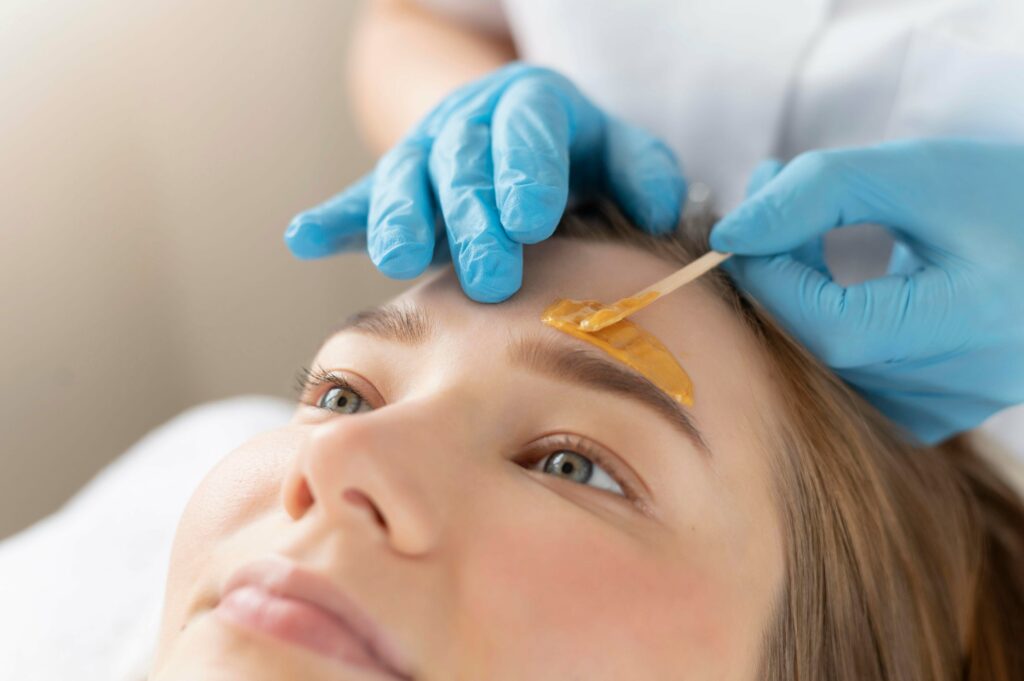
2. Laser hair removal
Laser hair removal uses concentrated beams of light to target and destroy hair follicles, resulting in permanent hair reduction. It is a long-term solution that can be effective for reducing unwanted hair growth. However, laser hair removal may not be suitable for everyone and can be costly.
 3. Depilatory creams
3. Depilatory creams
Depilatory creams contain chemicals that dissolve the hair at the surface of the skin. They are easy to use and can be applied at home. However, depilatory creams can sometimes cause skin irritation or allergic reactions, so it is essential to patch test before use.
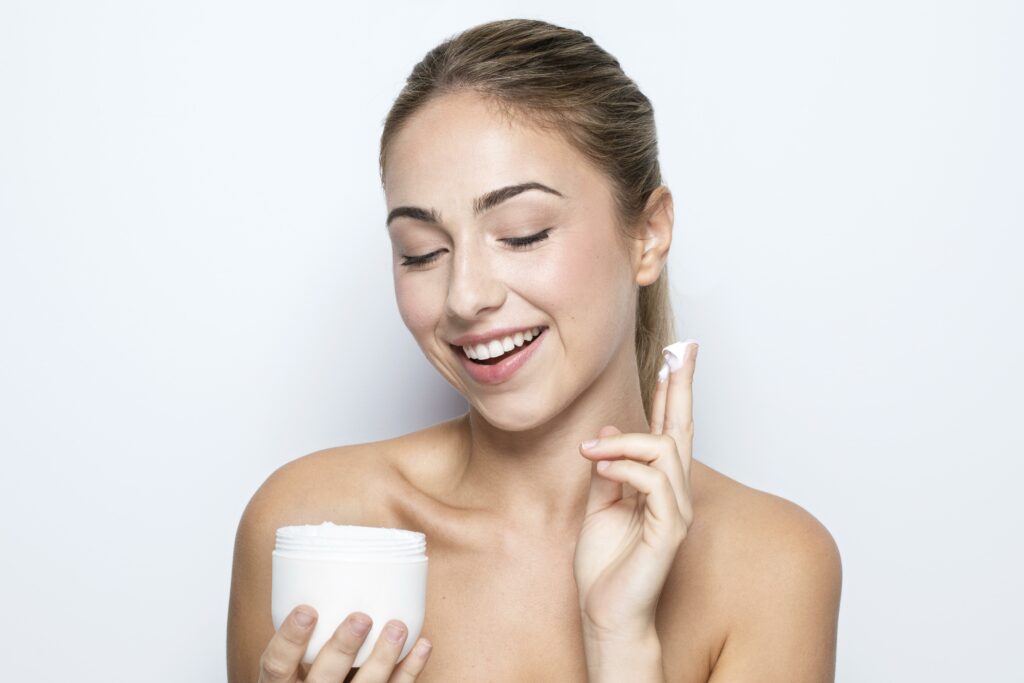 4. Shaving
4. Shaving
Shaving is a quick and inexpensive method of hair removal that involves using a razor to cut the hair at the surface of the skin. Contrary to popular belief, shaving does not make the hair grow back thicker or darker. However, it can cause temporary redness or irritation in some individuals.
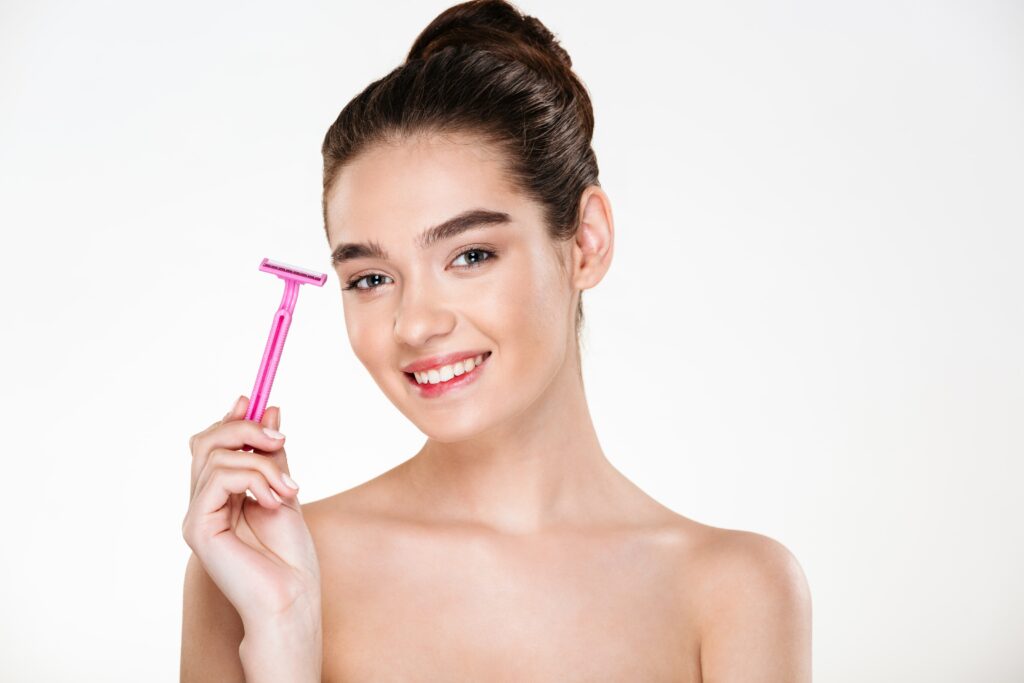
The impact Of Threading On Sensitive Skin
Threading, while generally effective for hair removal, can pose unique challenges for individuals with sensitive skin. Sensitive skin is characterized by heightened reactivity to various stimuli, including physical manipulation, environmental factors, and certain skincare products. As such, the process of threading can have a more pronounced impact on individuals with sensitive skin compared to those with normal skin types.
One of the primary concerns for individuals with sensitive skin undergoing threading is the potential for increased irritation and inflammation. The pulling and twisting motion of the thread can exacerbate existing sensitivity, leading to redness, swelling, and discomfort. Additionally, the friction generated during threading can disrupt the skin’s barrier function, making it more susceptible to irritation and bacterial invasion.
Moreover, individuals with sensitive skin may experience prolonged recovery times following threading sessions. The inflammatory response triggered by threading can persist for an extended period in sensitive skin, leading to lingering discomfort and redness. This prolonged inflammation may also increase the risk of post-inflammatory hyperpigmentation, especially in individuals with darker skin tones.
To minimize the impact of threading on sensitive skin, it is crucial to communicate any sensitivities or allergies to the threading professional beforehand. This allows the technician to take appropriate precautions, such as using gentler techniques, adjusting the thread tension, or selecting hypoallergenic threading materials. Additionally, individuals with sensitive skin should follow a comprehensive pre-and post-threading skincare routine to soothe and protect the skin.
Pre-threading skincare may involve cleansing the skin with a gentle, non-comedogenic cleanser to remove any makeup, dirt, or excess oil. Applying a soothing toner or moisturizer can help hydrate the skin and create a protective barrier against potential irritation. Post-threading, individuals should avoid harsh skincare products and treatments that may further exacerbate sensitivity. Instead, opting for gentle, calming skincare products containing ingredients like aloe vera, chamomile, or colloidal oatmeal can help soothe the skin and alleviate discomfort.
Overall, while threading can be an effective method of hair removal, individuals with sensitive skin should take precautions to minimize the risk of irritation and inflammation. By communicating openly with their threading professional and adhering to a tailored skincare routine, individuals can enjoy the benefits of threading while preserving the health and integrity of their sensitive skin.
Also Read: Can Waxing Cause Ingrown Hairs?
How To Prevent Acne After Threading
Preventing acne after threading requires proper aftercare and skincare practices. Here are some tips to minimize the risk of breakouts:
1. Cleanse the treated area gently
Use a mild cleanser to cleanse the skin after threading, removing any residual hair, oil, or debris. Avoid harsh scrubbing or exfoliation, as this can further irritate the skin.
2. Apply a soothing toner
After cleansing, apply a gentle toner to calm and balance the skin. Look for toners that contain ingredients like witch hazel or rosewater, known for their soothing properties.
3. Moisturize adequately
Moisturizing is crucial to maintain the skin’s hydration levels and prevent dryness or flakiness. Choose a non-comedogenic moisturizer that is suitable for your skin type.
4. Avoid touching or picking at the treated area
Touching or picking at the skin can introduce bacteria and lead to further inflammation and breakouts. Keep your hands away from your face and resist the urge to squeeze any pimples that may appear.
5. Avoid heavy makeup
If possible, avoid wearing heavy makeup immediately after threading, as it can clog the pores and exacerbate acne symptoms. Opt for lightweight, non-comedogenic products instead.
Common Mistakes That Can Lead To Acne After Threading
There are several common mistakes that individuals make after threading, which can contribute to acne breakouts. These mistakes include:
1. Applying harsh skincare products: Using harsh exfoliants, strong chemical peels, or aggressive acne treatments immediately after threading can further irritate the skin and disrupt its natural balance. It is best to avoid such products for a few days after threading.
2. Over-cleansing or over-exfoliating: While it is essential to keep the treated area clean, over-cleansing or over-exfoliating can strip the skin of its natural oils and disrupt its protective barrier. Stick to a gentle cleansing routine and avoid excessive scrubbing.
3. Not moisturizing adequately: Failing to moisturize the skin after threading can lead to dryness and flakiness, which can trigger acne breakouts. Choose a lightweight, non-comedogenic moisturizer and apply it regularly.
4. Touching or picking at the skin: Touching or picking at the treated area can introduce bacteria and cause further inflammation and breakouts. Keep your hands away from your face and resist the urge to squeeze any pimples that may appear.
5. Neglecting proper aftercare: Proper aftercare is crucial to prevent acne breakouts after threading. Follow the recommended aftercare instructions provided by your threading professional and be consistent with your skincare routine.
How to choose a skilled threading professional
Choosing a skilled threading professional is essential to minimize the risk of acne breakouts and ensure a satisfactory outcome. Here are some factors to consider when selecting a threading professional:
1. Experience and expertise: Look for professionals who have extensive experience in threading and are knowledgeable about different skin types and conditions.
2. Hygiene practices: Ensure that the threading professional follows strict hygiene protocols, including using clean and sterilized tools, wearing gloves, and maintaining a clean workspace.
3. Reviews and recommendations: Read reviews or seek recommendations from friends or family who have had positive experiences with a particular threading professional.
4. Communication: A skilled threading professional should be able to communicate effectively, listen to your concerns, and provide appropriate recommendations based on your skin type and needs.
5. Certification and training: Check if the threading professional has received proper certification or training in the technique. This can provide reassurance of their expertise and commitment to maintaining high standards.
In conclusion, while threading is a popular method of hair removal, there is a potential link between threading and acne breakouts. The process of threading can cause trauma to the hair follicles, leading to inflammation and irritation of the skin. Additionally, threading can spread bacteria if proper hygiene practices are not followed, further exacerbating acne symptoms. However, by following proper aftercare and skincare practices, individuals can minimize the risk of acne breakouts after threading. It is also essential to choose a skilled threading professional who follows strict hygiene protocols and understands different skin types and conditions. For those with acne-prone skin, exploring alternative hair removal methods or opting for natural hair removal techniques may be beneficial in preventing acne breakouts.

